The mysterious world of Art Marketing
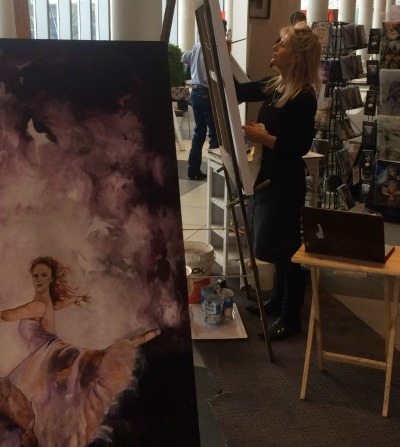
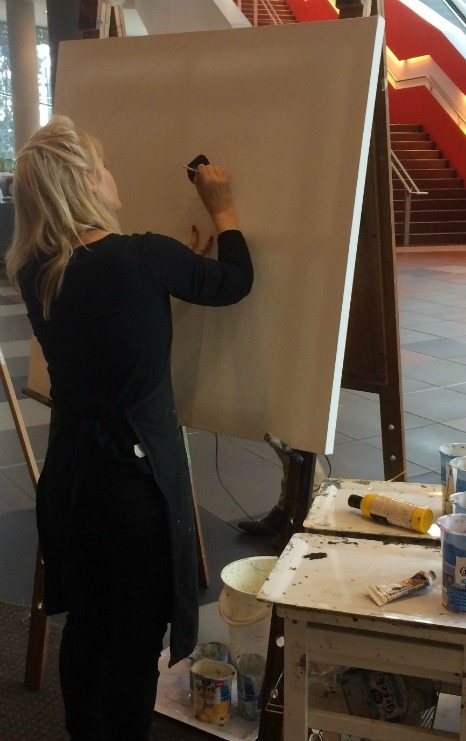
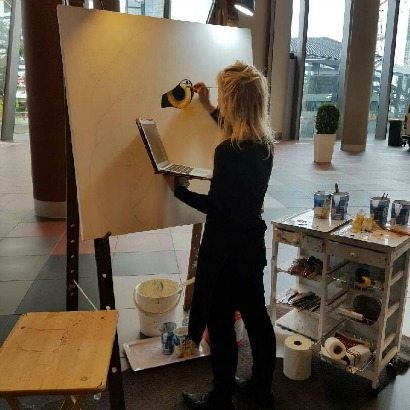
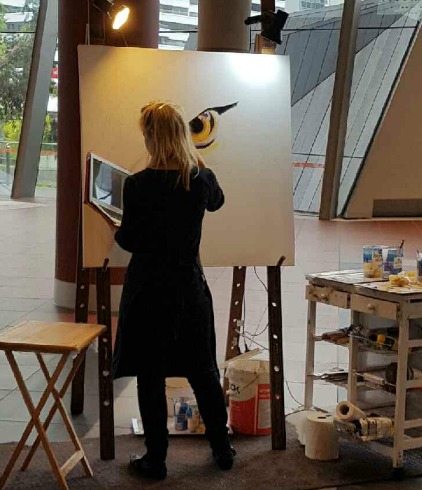

As an artist who has been around for a while and followed all the supposed steps to becoming a successful artist, I’ve come to realize that there are impractical ideas or even errors of thought that pervade many artists’ thinking and which has produced a system which doesn’t work for many artists. The idea that the first step is to go to university to learn how to be an artist is not correct as, in my experience, skills aren’t really taught. Instead universities, because their funding is usually dependant on proven research, steer students towards development of the ability to critically think about their art, which is all very good if someone else is paying your bills. There’s even a notion around that to focus on selling is somehow ignoble and that artists should instead focus on being true to themselves and producing their own work. Again, this is all well and good if someone else is paying your bills or you have an alternative income source or job, which actually may not leave a lot of time, energy or head space for art creation.
The following is a rather facetious list of the imaginary steps to becoming a successful artist that I wrote a few years ago for a presentation at a local university.
How do artists make a living? Outline the steps.
- Get an education at a university and acquire a huge tuition fee. This is usually acknowledged as the first step. The irony is that few actual art skills are taught in tertiary institutions.
- Gradually develop skills through self-tuition. Michelangelo is quoted as saying that “If people knew how hard I worked to get my mastery, it wouldn’t seem so wonderful at all.”
- Get positive feedback, usually from friends and family being kind, but how objective is it? Is the feedback honest or just kind, not wanting to hurt your feelings? Christians are especially ‘guilty’ of this, in the showing of ‘love’. Few people will be completely honest about the standard of Christian art. The question is, do people like it enough to pay for it, and if so, at what price? Are those who buy, buying from sentimentality?
- Build a website and a social media presence. This is a very time consuming process and you’re not earning while you’re doing it. As well, just having a website and a Facebook page won’t earn you any money, unless you use it correctly.
- Build your brand or image, which again takes loads of time and may be great eventually, but doesn’t make any return in the short term.
- Build a body of work to present to a prospective gallery.
- Approach galleries, starting with the local artist-run co-operatives. An exhibition will cost a minimum of $1000-$2000 as well as the time spent ‘minding’ the show. You can add the cost of framing, freebie nibblies, materials, publicity and listing in art magazines amongst other expenses. Then hope. Incidentally, if the gallery is not in an area that is frequented often by buyers as opposed to sightseers, you need to bring your own posse of buyers to have much success with this method.
- Repeat step 7. Hope. Pray.
- Apply for grants and spend huge amounts of time writing applications. An artist I know whose art has taken her overseas to Japan and Europe, who has her MFA and has been shortlisted for major prizes is getting significant critical acclaim in Australia. Her resume shines like a beacon of the up-and- coming serious artist to watch. However, she lives on welfare and spends a great deal of time writing grant applications, which are successful about 2% of the time.
- So now with a few runs on the board, start to approach commercial galleries. Lots of hope. Repeat all the costs for section 7, but now if you have any sales, pay the gallery half of any proceeds.
- Repeat steps 9 and possibly 7. Hope. Pray.
- Juggle all this with the constant need to self-promote, but when to actually paint or create? It’s highly likely that you may spend less than 10% of your time in the studio because of the need to juggle promotion and hustle to be seen.
13. Give up, get a job and dream of being a full-time artist or develop business skills.
This was the path that I travelled. In fact in 2014 I had works in seven exhibitions, three of which were solo shows. I had several live painting gigs, the largest of which was on stage in front of over 7000 people. I painted live at various interstate venues as well as in California and Auckland. I had a couple of commissions on the go and I delivered mixed media workshops based on portraiture. My regular job was teaching drawing at the Art Gallery of Ballarat each Saturday. I was really busy, but I didn’t make my living from it.
The prevailing system of the road to supposed artist ‘success’ didn’t seem to work for me and if not for me and the host of other artists who I knew, surely it is time for a shift. The opportunity for shift has fortunately come through the Internet and resultant world-wide markets, which means that we aren’t bound by parochial limitations of area or demographics or isolation or even unfashionable work. Global economies and markets have wonderfully changed the outlook for artists who no longer need to be reliant on a decreasing number of art outlets to make a living. This global market does require a change in thinking and process however.
When I went through university, there was nothing in any of the courses I was part of about how to take my supposed skills to the market or how to actually make a living other than the general assumption that you’d suddenly be able to create brilliant work and then get recognized and marketed through any number of galleries, making you rich and famous along the way. Maybe the fairytale did work for a tiny proportion once, but it certainly didn’t in my sphere of acquaintances. My observation is that most artists in Australia make their principal living from an alternative job or welfare and apply for grants. The result is a lot of artists who live more or less hand to mouth or are frustrated that they don’t have the time or emotional energy left to create after earning a living.
According to a Guardian online article (21), artists in Australia earn an average of $10,000 from their art with artists in other countries having similar low incomes. I’m not certain that that figure is correct but there is a huge margin for error that would still not provide a sustainable living. Even if that figure was wrong by 100% and the average income of artists was $20,000 pa, it’s still not enough to live on comfortably.
When I believed that I’d failed as an artist, I had no understanding about marketing, about creating a product that people actually want, or about pricing it to meet that market demand. Target markets, positioning, or other aspects of the marketing ‘p’s’ were things I’ve had to pick up along the way. That was a hard lesson to learn and thank God that we have begun to move on from that outdated system.
I eventually realized that I don’t actually like to visit pretentious galleries and it would seem that I’m not alone. As evidenced by large galleries closing around the world, patronage of galleries is declining everywhere. (22) Just as video stores have been superseded by on-line streaming, galleries are being superseded by print-on-demand sites, where you can buy affordable quality art from your own home. I’m not talking about the rarefied atmosphere of the high-end galleries because I don’t know much about them, but it appears that there is a dearth of affordable galleries in Australia.
It’s no small wonder then that I, in common with many other artists in Australia, ‘failed’ to make a sustainable living. I didn’t have a workable marketing strategy. I concentrated my efforts on a small number of exhibitions (because that’s all one person can really do well) and trusted that the high prices asked would return me a profit. It’s comparable to having a steam-punk machine with 30-40 movable parts which all need to line up together and interact in time to work. If one part doesn’t work, the whole machine doesn’t work properly. The interactive parts are the product, the price, the position and the promotion and if any of them aren’t working in alignment, the marketing machine doesn’t work. To get only one part working means a greatly reduced chance of successful sales and sustainable ongoing income. The tragedy is when artists take it personally and accept failure rather than working on a different facet of the marketing machine.
All Those Moving Parts That Need to Align
With hindsight, it’s possible to step back, look objectively and recognize the ’39 plus’ moving parts that need to all perfectly align before commercial success. The gallery that you pitched to has a different demographic, it just happens to have a surfeit of work like yours, you’ve priced your work too high or too low, your framing is below par, current home decor colors are right outside your palette, or any number of other causes. None of those reasons could equate to the quality of your work, which may or may not need more development, (and there’s an argument that everyone’s work constantly needs more development!)
The Ongoing and Growing List of 39+ Moving Parts to the Successful Selling of Art
- The use of quality materials
- Bright lucid paint application with no muddy colors
- The right demographic of the market
- The right position of the gallery
- A good sales person
- The timing of the exhibition doesn’t conflict with another major event such as sport
- Quality work
- Not over-priced
- Not under-priced
- Not used dated colors or themes
- Good lighting in venue
- Good marketing of venue
- Established buyer list in venue, not free-loading entertainment seekers
- Economy going well enough to sustain art sales
- Businesses attached to buyer group doing well affording disposable income
- Buyers like the work
- Framing up to standard if framed
- Work grabs the attention of viewers over and above surrounding work, meaning that those works may not sell.
- Not too large for buyer’s hanging position
- Not too small for buyer’s hanging position
- Colors match the color of buyer’s couch
- Terms of purchase affordable for buyer
- The meaning of the work is too obscure
- The meaning of the work is too obvious
- There is no meaning to the work
- There is too much meaning in the work
- The gallery is poorly run
- The sales assistant was new and poorly trained
- Someone, either the sales assistant or the artist didn’t do enough follow up
- The gallery is in a poor position, out of the way from passing trade
- Not enough bread and butter stock of cheaper, walk- out-the door works that pay the rent
- Work not hung long enough in venue
- Work hung for too long in the one venue
- Work not moved to a new venue quickly enough
- Work in wrong venue
- Serendipity
- Global financial crisis and it’s after-effects
- Too little time spent on bookkeeping, social media and promotion, too much on art creation
- Too much time spent on bookkeeping, social media and promotion, not enough on art creation
- The tax department changed the deductibility of art purchases.
- Buyer has just had an argument with spouse.
- Buyer has just had an argument with the tax department. And lost.
- Any number of other arcane reasons all colluding at the same time.
This incomplete list is in no particular order and for the more observant among you, numbers 43, not 39. The number 39 was an arbitrary figure plucked out of the air to signify the capriciousness of art sales. The list could go on and on and is by no means a complete list. Any and all of those reasons could line up at the same time to influence commercial success or sales. Your work could be in the wrong outlet or be priced badly, or any number of factors. The important thing is not to take it as a personal affront to your work.
I found it really hard to separate myself from the rejections by objective reasoning and instead took it all personally, which essentially crippled my development for a long time. In fact, approaching galleries is still an issue. To put it into perspective, I’ve made my living over the years from commercial property. One day I realized that I’m very comfortable negotiating on million dollar properties but baulk at approaching galleries or buyers over $1000 paintings! One area I’m objective about, the other is intimately tied into personal efficacy and therefore subject to the whims and vagaries of the emotional roller coaster. The reason I raise all this is that I wonder how common that dichotomy is with artists.
It’s so easy to make the connection between rejection of my art to rejection of me and yet that is such a deception.
It’s like a young graduate trying to get a job who applies for three or four positions and then gives up because of the rejection. The way to get a job is to apply for as many as it takes, even if it’s a hundred or more. The way to find a gallery if that is the direction you want to take is to apply for lots and lots, not take each rejection as an earth shattering experience of personal rejection. Of course, along the way you need to remain open to learn from each rejection as much as possible.
To summarize all the above, if you want to make a living from art you need:
- a product that people actually want,
- at a price that they will pay,
- in a place that they can find easily.Some art needs to be a product not a process if it is to make a living without government assistance or grants. That doesn’t mean that all an artist’s work needs to be saleable and it doesn’t compromise the artist’s integrity, but it could make their practise sustainable over the long haul.
Start Your Own Prophetic Art Adventure With The 'Painting With God" book.

You'll be guided by experienced artist, Grace Bailey, through ten colorful chapters on how to get started, face your fears and create images that tell God-stories.
Obvious Blunders
I recognize now that I didn’t try enough of the right types of outlets. Different galleries cater to specific groups of clientele and not all art will fit. I internalized rejection personally instead of moving on to the next outlet. Taking the rejection personally meant that I didn’t slough it off and move onto the next outlet, but stopped trying. In retrospect, I see that now as really dumb.
Marketing
I invested in exhibitions in galleries and trusted that they had significant customer lists when, in actuality, to a degree, galleries expect you to bring your own clientele. I relied on the galleries’ ability to get buyers through the door when that is not an assumption that you can make. Just having an exhibition is not going to guarantee sales. In fact, when you weigh up the amount of time and effort to prepare for an exhibition as well as the expense, it’s not a game you can play for long before running out of funds or motivation unless the buyers come...
Another mistake I made was that I didn’t go after enough other types of venues such as cafes, even though I’ve had some good sales in such venues. When you think about it, people sit and relax in cafes. If the art there is good enough to stand out, the potential buyer has time to contemplate without pressure. As well, the commissions are rarely as high as a gallery and it’s a good way to get objective feedback about your work. You could use it as an exercise in market research. Alternative venues such as art fairs, cafes and businesses where people congregate, especially on tourist runs, can be quite lucrative.
Such outlets can take time to find, service and administer with varying degrees of success. A lot comes back to having the right product in the best place at the right price and promoting well. These are the basic principles of business that form the core of the 39+ Moving-Parts-Machine for selling art or any other kind of business.
Bricks and mortar retail is becoming harder and harder, where Internet outlets are opening up all the time. Being seen or noticed in an ocean of artists is the thing though.
So what would I do differently?
Work out where I wanted to go and how I was going to get there instead of believing that God would somehow make it all happen for me.
Identify and refuse to allow rejection to have the life- sucking hold it had on me for so many years.
Make attainable but realistic goals and stick to them.
Not get distracted along the way.
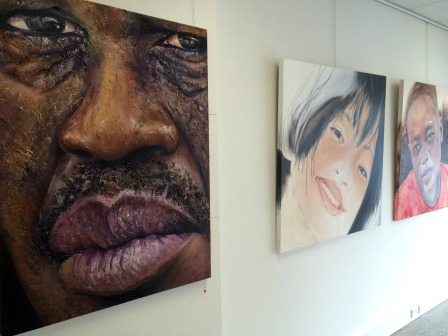




Financial Reality

Initially when I started prophetic painting my heart had been to focus on painting God’s messages without too much regard for the finances or selling the paintings. But recently He has begun to nudge me towards a more sustainable model. When I worship paint, I don’t do it to sell the original, although that’s sometimes a welcome delight. For the reasons listed above, I personally find it very difficult to price my work appropriately and ask a reasonable price for it. As well, immediately after I’ve painted, I’m often a bit out of it and sales negotiations can be awkward.
Depending on how intense the worship was, I can be spaced out, and talking about pricing paintings is the last thing I want to do. When I first started painting, I was often carried away with the anointing and the atmosphere and used to give the paintings away. I eventually learned not to do that! If it is to be more than a hobby I have had to find a way to make it financially sustainable and to thrive.
Painting is a relatively expensive exercise. I believe that it’s really important to always use quality products and that’s costly. To give an example, I recently flew to a week-long interstate conference to paint and it cost me around $1200 – without food and accommodation. Fortunately, I sold enough to cover my basic costs, but to be able to sustain that kind of outlay needs a marketing strategy that works. The reality is that worship art costs money and unless you’re going to self-fund endlessly, it needs to sustain itself.
The danger is that if artists can’t make a sustainable living from their art so many will give up or seek other income methods, taking time away from the ongoing sustained pursuit of excellence that I believe is necessary to usher in this renaissance of the arts that many prophets have referred to.
Why Don’t People Buy?
Unfortunately, buying original art is not something that is high on a lot of people’s budgets. Many people will spend thousands on a couch or a bed but buy their art cheaply from a Chinese importer. The perception of the value isn’t there.
In the wider community, original art has become a commodity that is usually priced to invoke a perceived value because it was done by a particular person. An exact replica of a Pollock or a Manet would be virtually worthless, even though it might take an expert to tell them apart, and yet the original might be worth millions. That’s another of those taken-for-granted concepts that doesn’t make sense in my world. That’s the high end market, not the lower end, but I wonder if some of that out-dated thinking has filtered down so that many people believe that original art is a commodity that is outside the budget of mere mortals.
As well, there’s a perception that because you’ve just painted it in two hours it should cost less than $100 or that the price should somehow be translated back to a hourly rate regardless of the amount of time, thought, prayer and skills-building you’ve put in beforehand, or the cost of the materials which is often bordering on at least that much for a larger work.
Added to this, prophetic art may not fit in secular galleries, effectively closing off much of the existing sales method. In order to make a viable living from art sales, one or two outlets and one or two exhibitions a year probably won’t cut it. Again I say probably because some might make it work. But for many artists, sales happen across a range of outlets and require a lot of hustle.
Seeking An Alternative
Lest all this sound like a grizzle about the difficulties of maintaining a viable arts practise, it’s actually just setting the groundwork for looking for a substitute or a new way of selling art. I cast around for a long time asking God for an alternative to the gallery system. Too many artists, funnelled through too few galleries to way too few buyers was not something that I wanted to waste my life on. Every year more graduates finish art school and try to find their place amongst a decreasing number of galleries.
However, with the advent of the marvelous world of the Internet, opportunities abound with on-line galleries, shops like Etsy and even prophetic galleries. What it does require though is Internet savvy, persistence, attention to detail, resilience and the realization that prices may not be on par with traditional galleries.

On-line galleries and print-on-demand outlets are changing the way some art is marketed. Prints are available at a reasonable price in an amazing array of styles and ability. If the buyer gets tired of a design, they can change it whenever they please. As well, the standard is often really high. If they don’t like a particular artist, there’s bound to be one who they might prefer when there are 20,000 images to a site!
Print-on-demand image galleries can open up whole new sales opportunities if you have a targeted market. You still need to build a following of buyers that go to that site, and that’s the time consuming issue. It requires professionally photographed images of the works, editing and managing, but then those images can go on earning over and over as opposed to the one off sale of an original. One of my sons once asked me if I’d prefer to sell one work at $20,000 or 1000 images of that work at $20. My reply was the latter because it would mean my work would then be displayed in 1000 different venues and a great many more people would see it. It would be great to think that it were possible to sell a thousand copies of a print across a number of on- line outlets.
Social media presents similar opportunities for promotion that just didn’t exist a decade ago. It still needs to be the right kind of work and the right kind of promotion to the right target markets at the right price, but the possibility exists to be able to market from your living room. There’s a global market out there, which is theoretically available with enough time and skill invested into social media.
The New Breed
Now I realize that there is a whole generation of very highly skilled artists who sell their work online without the tragically overpriced gallery system. They are the new breed of artists who create concept art or illustrations and often use the internet as their initial outlet. They can be paid well if they reach a high level of skill. One I know in Australia grosses over $200,000pa from his art, but he walks an entirely different path to that of the academically trained arts graduate. Concept artists or “conceptual artists” create visual images of ideas for use in areas such as animation, comic book illustration, gaming, advertising, print, and many others.(23) They use digital drawing and illustration and can earn very good incomes. Much of the really high quality prophetic art that I’ve seen has been produced by a designer using a computer and photography.
Strength in Numbers
One of the major issues that I can see is that most artists, whether Christian or not, try to do all their own marketing themselves, which takes time and effort away from art creation. It would make so much sense to form or be a part of a group of artists with a similar ethos and standard to collaborate with marketing and promotion. There are several advantages as there would be the likelihood that a broader skill set would be brought to the table and there is strength in numbers. Imagine having a peer set to talk about art, share costs, photography, video, marketing, blogs, social media posts and even art methods. Just the encouragement of having a group who met together to market would assist greatly with the emotional ups and downs of being an artist.
Financially the costs could be shared enabling more money to be spent to achieve outcomes. As well, some artists find it very difficult to cope with people and the whole business of marketing. Being part of a collaborative group gives the strength of numbers. As a worthwhile side effect, the inclusion of emerging artists with more mature artists would have the effect of nurturing the learners, but that may be something that is left to later. However, younger emerging artists working with older, more mature artists could establish a mutually symbiotic relationship where the younger learn skills while assisting with social media and video.
The obvious existing example of this kind of collaboration is artist-run galleries, which usually have varying degrees of success based on personalities and differing business expectations. Just as obvious though is the modern adaptation of those artist-run bricks and mortar galleries to on-line galleries. The model I’m advocating could start small, where each contributing artist brings their 500 or so followers to a mutual online presence, creating a potential market pool much larger than each individual’s. If you had a small group of five or so who all had 500 followers, that creates an instant 2500 member following. Of course, it would be important that the site offers content that is engaging, credible and professional and not just geared at sales, but it would take far less time to sustain if each contributing member posted say, for instance, a blog post and a video each month. Throw in new works created and there would be enough momentum to begin to organically grow.
Translating that into income production is the thing though. However, if each of those followers spent $5 per year, that’s $10,000 income for what may only be a few minute’s work each day and a day a month! Multiply that by more followers and it begins to become viable. Of course, it’s actually unlikely that all the followers would buy, but some may buy several times. The key would be to produce product that is saleable and popular.
What’s It Got to Do with Prophetic Art?
So what has all this to do with painting with God? I raise a few of these points because they speak to creating a professional, sustainable arts practise that enables more people to see it, experience it and perhaps do it. As previously discussed I advocate for increasing skill levels for all prophetic artists as an on-going lifestyle and if that is to be sustained, some return needs to be afforded from the works created. As well, I raise the issues of my lack of apparent commercial success in the hope that others might not end up as disillusioned and defeated as I had been.
If prophetic and Christian artists give up professional art making because it is too difficult to make a living, they are not pursuing that area of giftedness for the Kingdom. It silences those voices and those avenues for God to speak. If it goes on being a hobby for a lifetime, it’s unlikely to reach the standard of excellence or to have the impact that it may have been able to attain if pursued more fully, simply because life and all those other distractions get in the way and scream for attention.
Finding time and head space, let alone energy for art creation on top of busy lives and families is tricky. If coupled with financial unsustainability it’s hard to justify year in, year out as anything more than a hobby. If it is relegated to the place of a hobby in the attitudes of both the artists and their supporters, it’s hard to take seriously, but if professional art making is the goal, it will require a ‘long haul’ and demand serious application.
It’s not like you go to uni for a few years, graduate and suddenly earn a comfortable living. As I outlined before so many artists live close to the poverty line. I know a lot of wonderful people, some of whom are really good at what they do, who have amazing goals to produce CDs or art who are waiting on God to bring the marketing funnel. I actually believe instead that God wants us to utilize what is available and create our own outlets, rather than wait for Him to make it all happen. Otherwise why would there be so many undiscovered artists?
I hate the idea that some artists, driven by the need to create, spend their lives creating images that end up going to the rubbish tip after they die. Van Gogh may be a household name now but it didn’t do him a lot of good! What a waste that some artists spend a lifetime creating paintings that clutter the studio and don’t get out there. They go on painting endlessly without a viable marketing funnel and if they do get the opportunity to sell, their works are priced so high that they end up not selling. I recently heard a story of an ageing artist who can barely get access to her studio because it is filled with an ever-growing number of paintings gathering dust, but who refuses to lower her prices and/or has withdrawn from the trials and tribulations of marketing.
I don’t believe the Father wants to see so many impoverished Christian artists who are not taken seriously or who are unable to make a sustainable living. We have the resources of the Kingdom available and at our disposal – if we can get our heads, our hearts and our hands in the right place. It will look different and need creative thinking, but the world is full of opportunities and surely it should be the Christians who utilize them!
Start Your Own Prophetic Art Adventure With The 'Painting With God" book.

You'll be guided by experienced artist, Grace Bailey, through ten colorful chapters on how to get started, face your fears and create images that tell God-stories.
